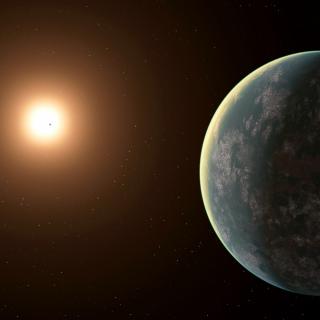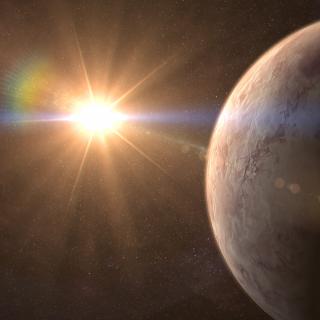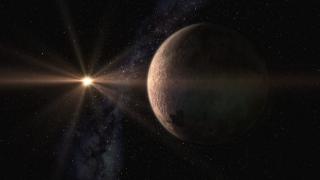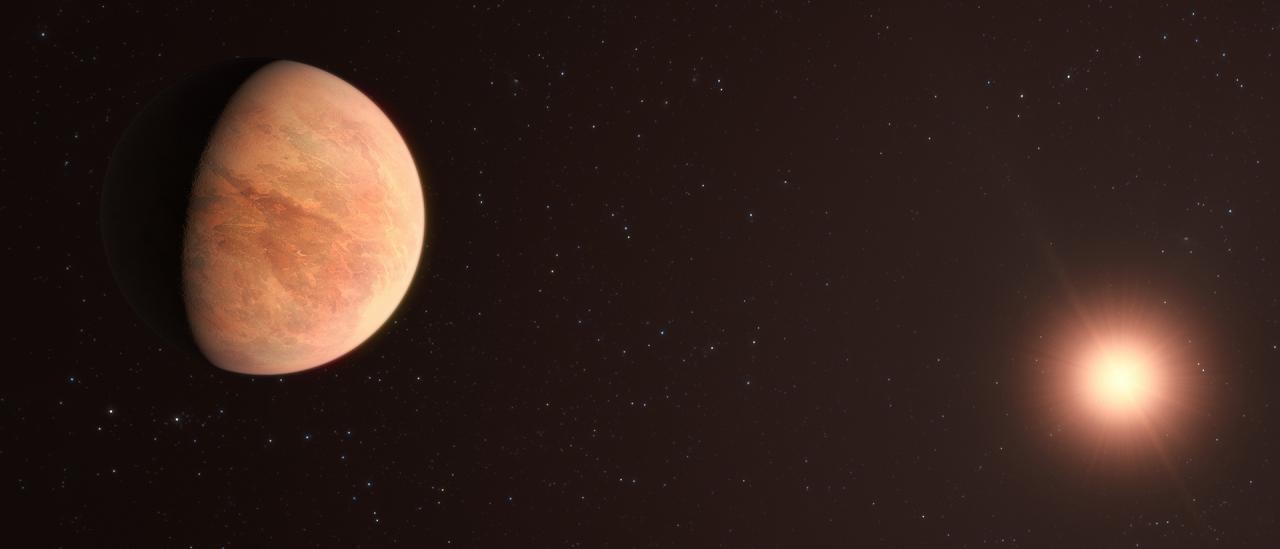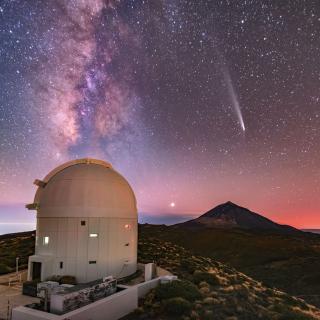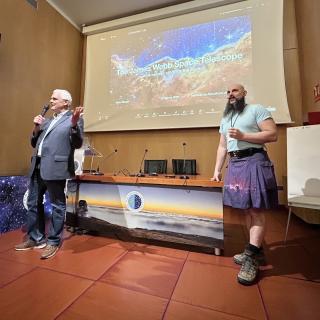An international team of astronomers, in which the Instituto de Astrofísica de Canarias (IAC) has participated, has found an exoplanetary system formed by several planets similar to the inner planets of the Solar System, orbiting around the nearby star L 98-59. Among them there is a planet with half the mass of Venus -the lowest mass exoplanet ever measured using the radial velocity technique-, an oceanic planet, and a planet possibly within the habitable zone.
The discovery, published today in Astronomy & Astrophysics, was made with data obtained from the Very Large Telescope (VLT) at the European Southern Observatory (ESO), in Chile, and is a good step forward in the search for life on Earth-sized planets outside the Solar System.
The recently studied planetary system, called L 98-59 for its star, is an attractive object for future observations of atmospheres of exoplanets. The star is only 35 light years away and this discovery shows that it has rocky planets, like the Earth or Venus, which are sufficiently near their star to be warm.
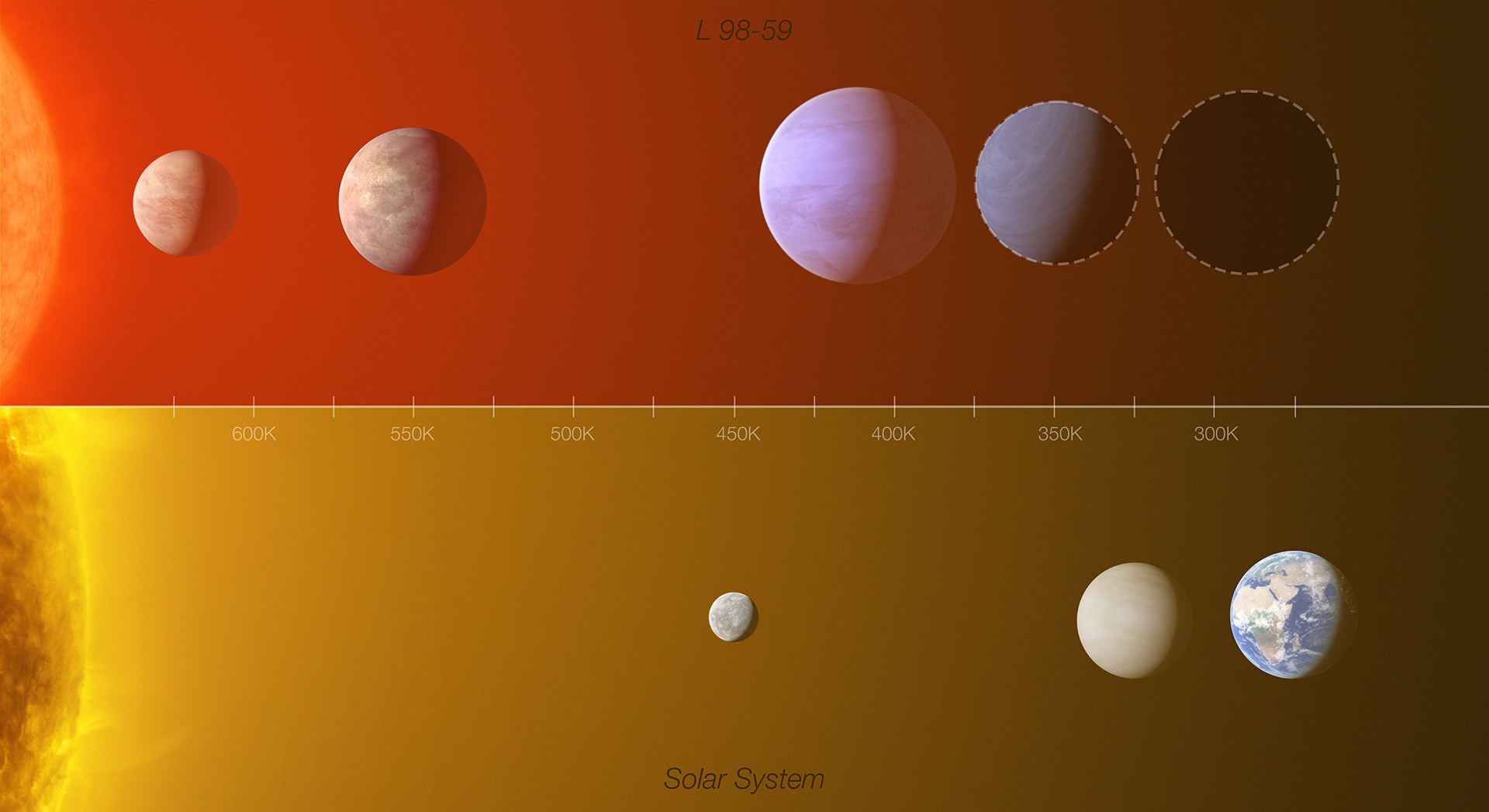
With the measurements of the VLT, the team could infer that the planets may contain water in their interiors or in their atmospheres. The two planets closest to the star are probably dry, but they could have small quantities of water, whereas up to 30% of the mass of the third planet could be water, which would make it into an oceanic world.
In addition, the team discovered a fourth planet and hints of a fifth, which had not been detected before in a zone at a distance from the star where liquid water could exist on its surface. “We have hints of the presence of a terrestrial planet in the habitable zone of this system”, says Olivier Demangeon, a researcher at the Instituto de Astrofísica e Ciências do Espaço of the University of Oporto (Portugal), and first author of the publication.
“The planet in the habitable zone could have an atmosphere which could protect and sustain life”, explains María Rosa Zapatero Osorio, a researcher at the Centre for Astrobiology (CAB, CSIC-INTA) and a co-author of the article.
The study is based on an important technical advance because the astronomers, using the radial velocity method, could show that the most interior planet in the system has a mass of only half that of Venus. This means that it is the lowest mass exoplanet ever measured with this technique, which measures the wobble of the star caused by the small gravitational pull of its orbiting planets.
The team used the ESPRESSO (Echelle SPectrograph for Rocky Exoplanets and Stable Spectroscopic Observations) instrument on the VLT at the Paranal Observatory (Chile) to study L 98-59. “Without ESPRESSO’s accuracy and stability we could not have made this measurement -explains Zapatero Osorio-. This marks a step forward in our ability to measure the masses of smaller planets outside the Solar System”, she adds.
Astronomers detected three of the planets of L 98-59 in 2019 using the NASA’s TESS satellite. TESS uses the “transit” technique, where the tiny reduction of light from a star caused when the planet passes in front of it is used to derive the properties of the planet. But it was only by adding the radial velocity measurements made by ESPRESSO and its predecessor HARPS on the 3.6m ESO telescope at La Silla (Chile), that Demangeon and his team could find the additional planets and measure the masses and radii of the first three. “If want to know more about what a planet is made of, the minimum information we need is its mass and its radius”, indicates Alejandro Suárez Mascareño, an IAC researcher and a co-author of the article.
The team hopes to continue to study the system with the forthcoming James Webb Space Telescope (JWST) of NASA, ESA, and the Canadian Space Agency (CSA), and with the Extremely Large Telescope (ELT) of ESO now in construction in the Chilean Atacama desert, which should begin observing in 2027. “The HIRES instrument on the ELT could be powerful enough to study the atmospheres of some of the planets in the L 98-59 system, and complement the JWST observations from the ground”, explains Zapatero Osorio.
The detection of biosignatures on an exoplanet depends on the capacity to study its atmosphere, but present day telescopes are not sufficiently powerful so that it will be necessary to wait for the next generation of telescopes, such as the TMT or the ELT, to do this for small planets.
“This system is an announcement of things to come”, adds Rafael Rebolo, the director of the IAC and co-director of the ESPRESSO project. “Our society has been looking for terrestrial planets since the birth of Astronomy, and now finally we are getting closer and closer to the detection of a terrestrial planet in the habitable zone of its star and whose atmosphere we could study”.
Article: Olivier D. S. Demangeon, M. R. Zapatero Osorio, et al. “A warm terrestrial planet with half the mass of Venus transiting a nearby star”. Astronomy & Astrophysics. DOI: https://doi.org/10.1051/0004-6361/202140728
Contact at the IAC:
- Alejandro Suárez Mascareño: alejandro.suarez.mascareno [at] iac.es (alejandro[dot]suarez[dot]mascareno[at]iac[dot]es)

